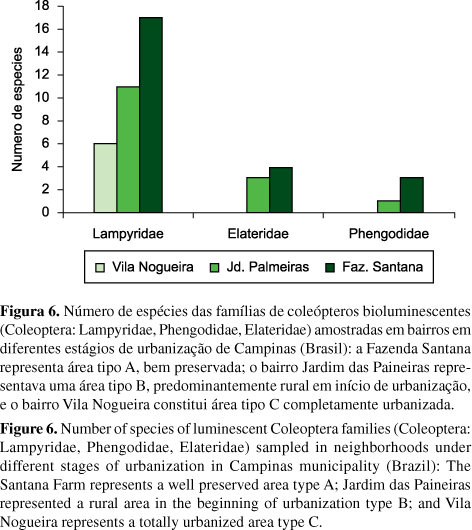Brazil hosts the richest biodiversity of bioluminescent beetles in the world. However, no surveys on the regional biodiversity have been made. Furthermore, studies on the effect of urbanization on bioluminescent beetle's biodiversity are still missing. Such kind of studies could be especially helpful to select new night environment bioindicators. Bioluminescent species of the Elateroidea superfamily occurring in three large and expanding urban areas in São Paulo State: Campinas, Sorocaba-Votorantim and Rio Claro-Limeira municipalities, were catalogued. In Campinas, the occurrence of bioluminescent beetles in different sites has been monitored during the past 20 years. There were 26 species in Campinas, 21 in Sorocaba-Votorantim and 19 in Rio Claro-Limeira, occurring mainly in conserved remnants of Atlantic Rain-forest, secondary growths, marshes and open fields. Whereas fireflies (Lampyridae) are found in almost all habitats, click beetles (Elateridae) and railroadworms (Phengodidae) occur predominantly in woody environments. Urban sprawl has an evident impact on the biodiversity of this selected group of beetles, and special attention should be given to the effect of artificial night lighting in the occurrence of these beetles. The lampyrids Aspisoma lineatum Gyllenhal, 1817 (Lampyrinae: Cratomorphini) and Bicellonychia lividipennis Motschulsky 1854 (Photurinae) are the most common species in urbanized areas, whereas many other species of lampyrids, elaterids and phengodids are rarely found in such environments. These studies offer insights on the potential use of a selected group of luminescent beetles found in this region as nocturnal environment bioindicators.
Lampyridae; Elateridae; Phengodidae; fireflies; railroad-worms; click-beetles; bioluminescence; bioindicators; light pollution













